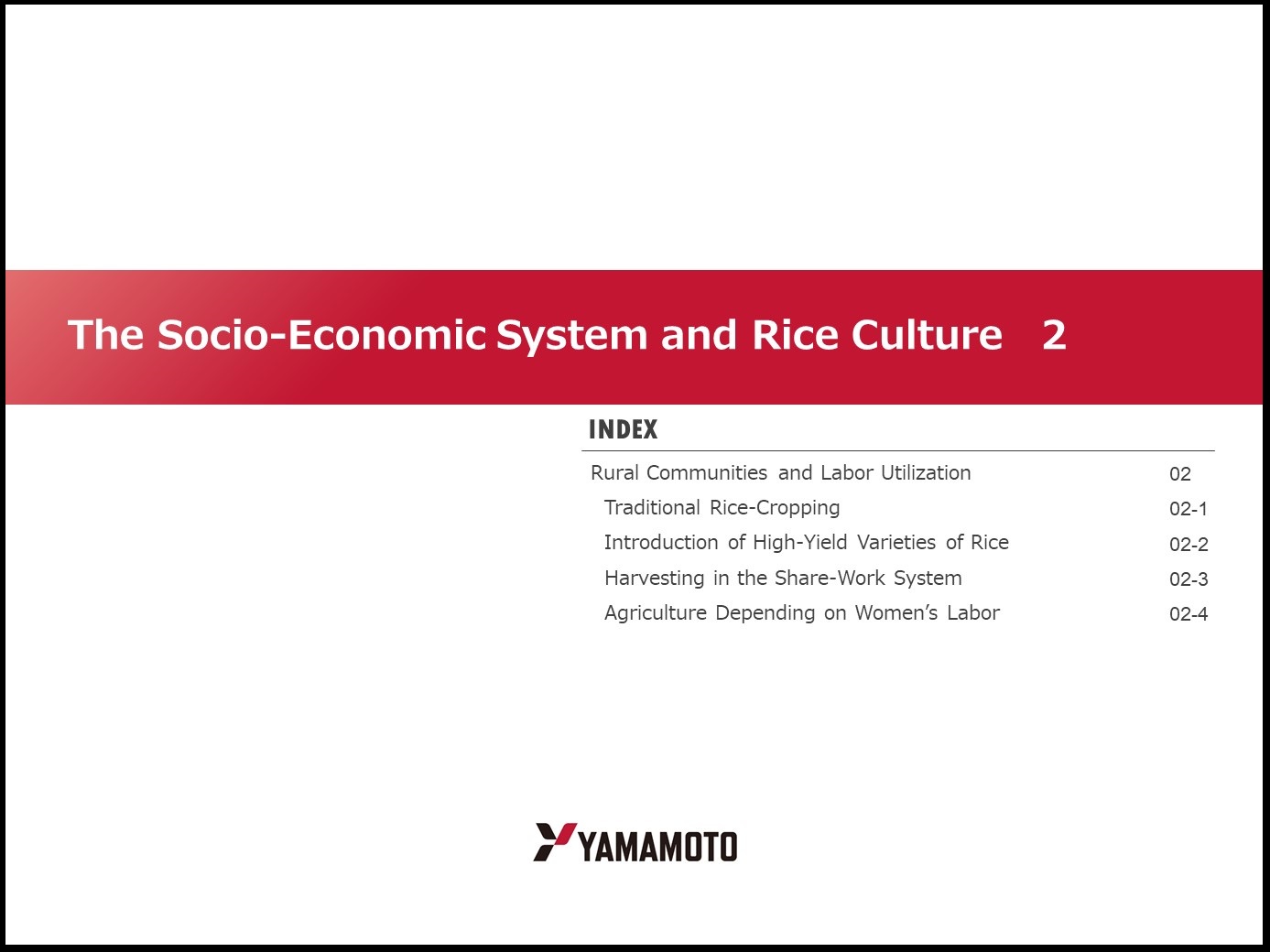21. The Socio-Economic System and Rice Culture 2
- INDEX -
Rural Communities and Labor Utilization
Traditional Rice-Cropping
Introduction of High-Yield Varieties of Rice
Harvesting in the Share-Work System
Agriculture Depending on Women’s Labor
Rural Communities and Labor Utilization
Traditional Rice-Cropping
Until the above-mentioned technical innovation was introduced in the 1960s, an extensive farming had been common for rice-cropping in developing countries. Water buffaloes were used to plow rice fields at the beginning of a rainy monsoon season. Farmers then sowed rice seeds, which they had collected themselves, in nurseries, and planted matured seedlings in rice fields irregularly and densely. The rice plants were left as they were while they grew, except that casual weeding was practiced. Since grains in ripened ears of rice were easily shattered, mattured ears were carefully cut off one by one with a small reaping knife (ani-ani in Indonesian and yatab in Tagalog).
Reaping had to be repeated over and over again, because the maturity of each ear differs within a single field, or even on a single stub or a single panicle. The amount of labor invested for rice-cropping at that time was 90 to 130 man-days per hectare (labor for reaping not included) and the yield was 1.0 to 1.5 tons of paddy per hectare.
Introduction of High-Yield Varieties of Rice
When high-yield varieties of rice (HYVs) were introduced in the 1960s, the quality of labor in rice-cropping, particularly reaping practices, was drastically changed. Since the growing period of the new varieties was shorter, double-or triple-cropping became possible in irrigated fields. If fields were fertilized sufficiently and if the crops were not damaged by insects and diseases, the yield of the new varieties could be doubled in comparison with that of the traditional varieties. Since the amount of labor required for rice-cropping increased to the level of 200 to 250 man-day per hectare, chances of employment were enlarged in the rural communities. When the post-harvest job for HYVs is compared with the job for the conventional varieties, the following features can be pointed out:
